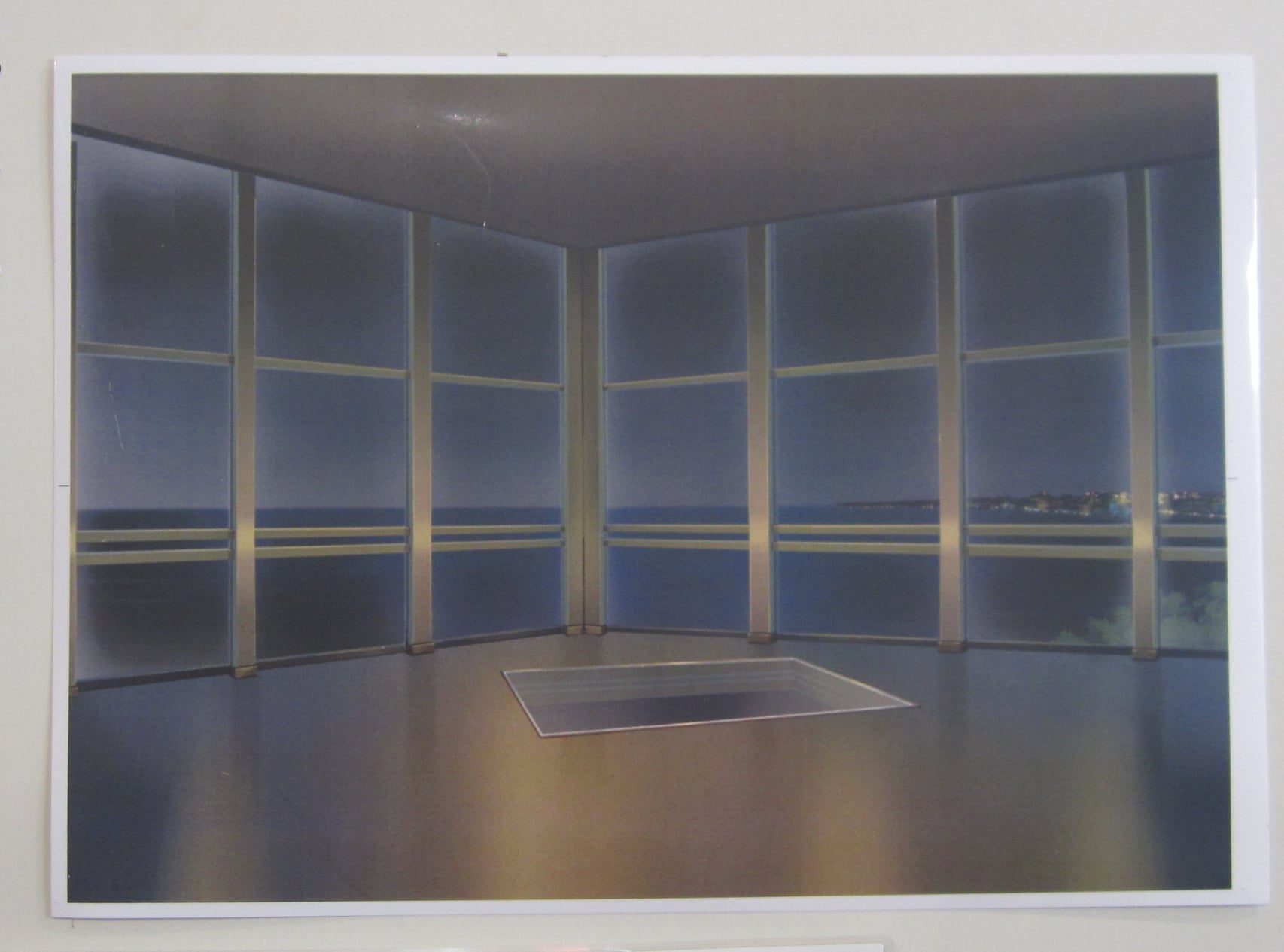The Itinerary Begins: Tokyo Area Towers
Day 1
I chose to start this itinerary off in Tokyo rather than Osaka, since Tokyo has better air connections. I have started in Osaka before by flying into Tokyo and then taking a connecting flight, but that turned into a lot of fatigued shambling around Osaka that I would rather not repeat. I will just warn you that while the trains always run on time in Japan, the same cannot be said about the budget domestic airlines. I must give them some credit for attempting some particularly innovative cost-cutting techniques that I have yet to see elsewhere, such as printing boarding passes with regular receipt printers, using a bathroom scale to weigh luggage at check-in, and selling Cup Noodles for $5 as an inflight meal.
Anyways, once in Tokyo, three of the towers are basically gimmes: the Tokyo Tower (duh), Yokohama Marine Tower, and Chiba Port Tower. If you were so inclined, you could probably knock out all three of these in a day, but I think the more leisurely option of letting each tower anchor a day of sightseeing is better, which is how this plan will proceed.
Tokyo Tower
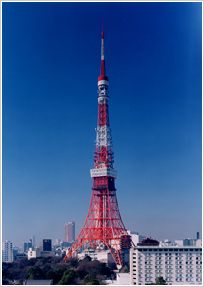
Tokyo Tower, the All-Japan Tower Association’s steadfast monarch. I have no definitive proof but I am reasonably certain that it operators have had a significant hand in forming and running the Association. I swear that is not a conspiracy theory although somehow it came out sounding like one. At any rate, it can still make a claim for the title on account of being the tallest (at 333m, a height that we are assured was definitely determined by scientists and engineers to fit the intended broadcast region and not by, say, occult numerologists) and most famous tower in the Association. The magnum opus of Japan Tower Design King Tachū Naitō, it was vaguely based on the Eiffel Tower in perhaps another example of Japanese Francophilia. Its distinct orange and white color scheme is to make it more visible to aircraft, a fate that I suppose the Eiffel Tower escaped because it was built before there were aircraft.
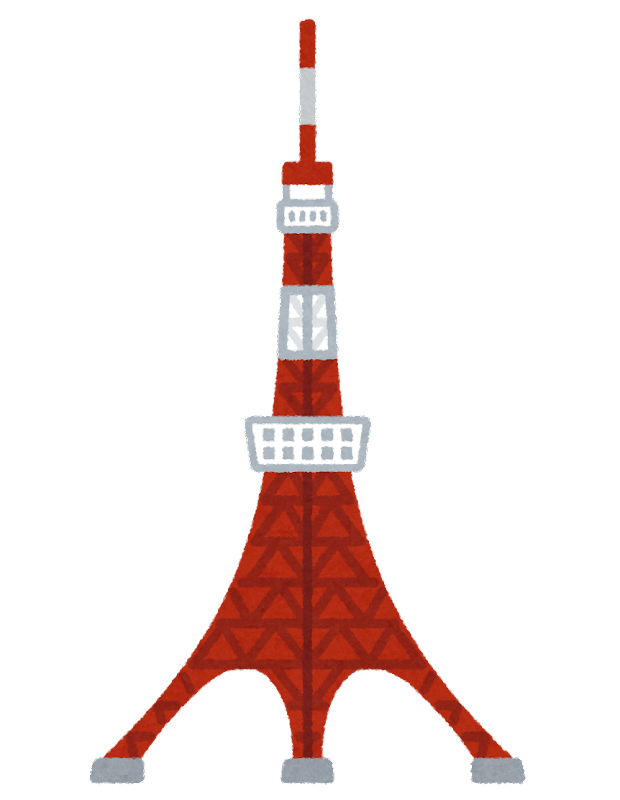
As a result of its landmark status, it’s one of the few towers in the Rally that I’ve actually already been to, and even up. If you’re a train man, it’s conveniently located a modest walk from Hamamatsuchō station on the Yamanote line, reasonably close to Tokyo station and the Imperial Palace, which you could also visit the same day. The tower itself is in a bit of a park-like clearing in the midst of the urban jungle, although among the vegetation and actual parks, there’s a few miscellaneous temples and fancy hotels. Inside the tower itself, they really seem to lean into the “tourist destination” angle, with an extensive souvenir shop and some sort of mini-theme park based on one of the big shonen franchises that may or may not have since been replaced with something equally dubious. I feel like there was a live jazz performance up on the observation deck the day I was there, but I may have imagined that.

Day 2
Yokohama Marine Tower
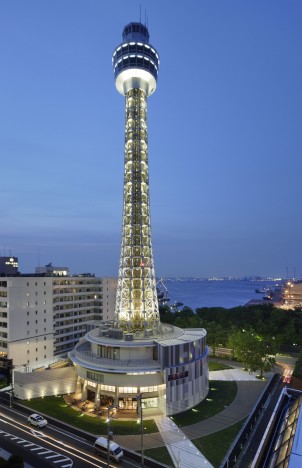
The Yokohama Marine Tower is one of the many towers that is built in the port/coastal area of a city. The reasons for why this is so common, at least in Japan, is still obscure to me. Is it nostalgia for the bygone days of lighthouses? Do people not want big towers built near them, so they are forced to put them in vaguely industrial port areas? Or maybe it’s so that if the tower falls over somehow, there’s a good chance that it harmlessly ends up in the drink nearby?
In any case, the poor Yokohama Marine Tower is now overshadowed by the nearby Yokohama Landmark Tower, Japan’s second tallest building and three times the Marine Tower’s height. I’m not sure if it’s this contrast that made me notice it, or perhaps the silhouette floor map on their website, but the shape of the Marine Tower reminds me of a chess pawn. Now there’s a good idea for some Tower Association merch, a tower chess set. I have, after all, already identified Tokyo Tower as the king, and now here we have the pawn. 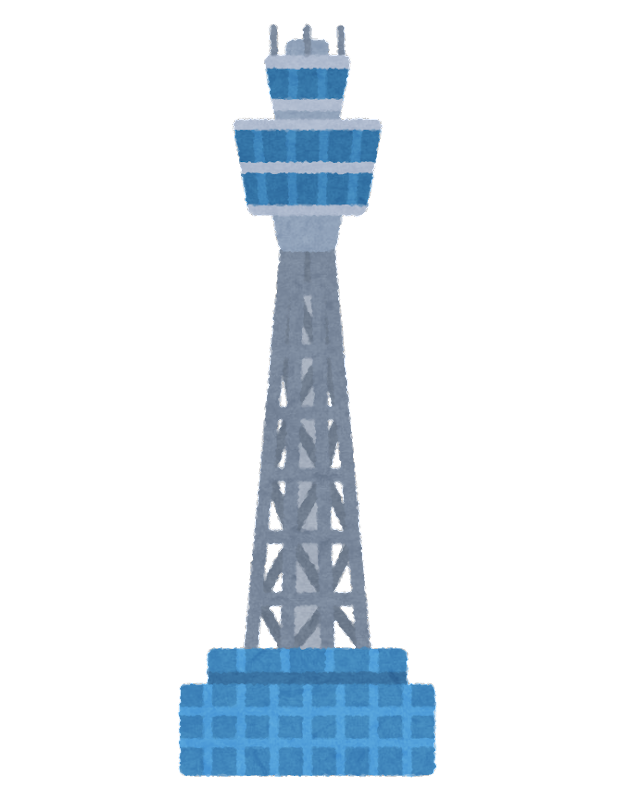 At least the Marine Tower is conveniently located in Yokohama’s so-called “Minato Mirai” coastal entertainment and sightseeing district, so it’s easy to fit it into a whole day of visiting the other attractions in the area like the old boat, Ferris wheel, the previously-mentioned Yokohama Landmark Tower, the curved escalator in the mall below it, the Cup Noodles Museum, and Yokohama’s Chinatown.
At least the Marine Tower is conveniently located in Yokohama’s so-called “Minato Mirai” coastal entertainment and sightseeing district, so it’s easy to fit it into a whole day of visiting the other attractions in the area like the old boat, Ferris wheel, the previously-mentioned Yokohama Landmark Tower, the curved escalator in the mall below it, the Cup Noodles Museum, and Yokohama’s Chinatown.
Day 3
Chiba Port Tower
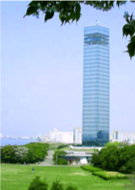
On the other side of Tokyo is Chiba, which has a lot less going on compared to Yokohama. It’s pretty much Tokyo’s Newark, an unpretentious, though particularly large, suburb. The only excuse I’ve ever found for going there is to visit Costco, which ended up being a horrible mistake (I will not elaborate). I wanted to make sure that I wasn’t being unfair to Chiba with this assessment, so I looked at its page on Wikivoyage, and guess what one of the sights listed was? Costco. I am not making this up. Wikipedia, on the other hand, offers up the “Kasori Shell Mound”, apparently the largest in Japan and among the largest in the world. Anyways, now there’s yet another reason to visit: the Chiba Port Tower. You could be boring and take the train straight to Chibaminato station, from which it is a brief walk from the tower, or you could take the train to Chiba station and then take the freaking SUSPENDED MONORAIL to Chibaminato station. 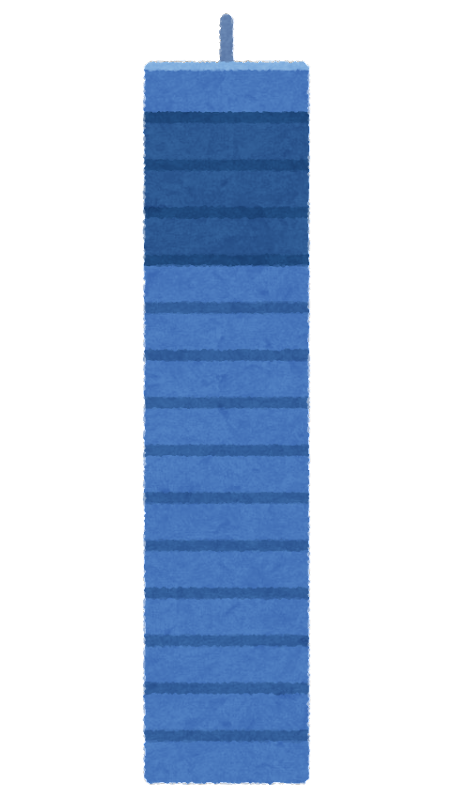 The easiest decision of my life. In fact, I was already thinking of going to Chiba for the suspended monorail alone. I may have been a bit disingenuous in my earlier description of Chiba by leaving it out, because it’s by far the city’s biggest selling point. Suspended monorails are phenomenally rare, and the one in Chiba is in fact the world’s longest. After riding the monorail to the tower, though, I’m not sure what else there would be to do in Chiba. Maybe ride the suspended monorail to the other terminus? Going to Costco again is out of the question.
The easiest decision of my life. In fact, I was already thinking of going to Chiba for the suspended monorail alone. I may have been a bit disingenuous in my earlier description of Chiba by leaving it out, because it’s by far the city’s biggest selling point. Suspended monorails are phenomenally rare, and the one in Chiba is in fact the world’s longest. After riding the monorail to the tower, though, I’m not sure what else there would be to do in Chiba. Maybe ride the suspended monorail to the other terminus? Going to Costco again is out of the question.
Oh, right, I forgot to say anything about the tower itself. From the name, you may have been able to guess that yes, indeed, it’s another tower built in an industrial port area. The only thing I can say about the design is that it seems appropriate for Chiba. Seems like it has a good view of the nearby ironworks, too.
Day 4
Choshi Port Tower
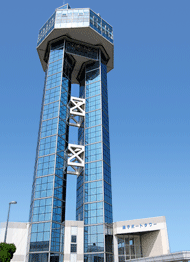
Earlier, I called the three previous towers “gimmes” if you’re staying in the Tokyo area, and now here’s the one that isn’t. It’s still relatively close to Tokyo, and wouldn’t fit in well anywhere else in the plan, so this is where it’s going to go. If you look at the coast of Japan to the east of Tokyo, past Narita, there’s a kind of pointy bit of land, like a giant pimple, or to the less refined mind, a nipple, and that’s where Choshi is. It’s not too difficult to get to, since Choshi station is at the terminus of the Narita rail line, and in fact there’s an express train that goes there straight from Tokyo station. It just takes a little while to get there, around two hours one way, so visiting this tower would definitely have to be a day trip. From Choshi station, you can take a twenty-minute local bus ride, or if you’re feeling spry, you can take the Choshi Electric Railroad three or four stations and then walk twenty minutes. I’m really not sure if there’s anything else to do in Choshi, but you never know what you’ll discover once you’re actually out there, pounding the streets and piercing the sky. Sometimes, just the vibes of these off (the) beat(en path) destinations is enough.

As for the tower itself, even the Tower Association website’s description is unusually concise. It appears to have been built to promote tourism in the area, and it’s certainly working at least a little, because otherwise I would have absolutely no business being in Choshi. True to the name, it is yet again another tower built in a port area, although at this one you can also taste what they bring in at the port, as it’s connected to some sort of seafood market by a bridge. The only other thing of note is that it was apparently in an episode of an anime called “Amagami SS”, where they took the artistic liberty of adding a glass floor area in the observation deck that is not in the actual tower. I hope nobody has made the perilous journey out to Choshi, only to find that they’ve been bamboozled once again by writers stretching the truth for plot convenience.
